Often cited as one of the worst films ever made, this 1952 low-budget mad scientist/jungle comedy is better than its reputation – if you can get past Sammy Petrillo’s Jerry Lewis imitation. 3/10
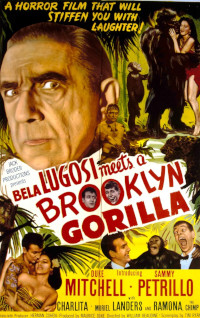
Bela Lugosi Meets a Brooklyn Gorilla. 1952, USA. Directed by William Beaudine. Written by Tim Ryan. Starring: Bela Lugosi, Sammy Petrillo, Duke Mitchell, Charlita, Muriel Landers. Produced by Herman Cohen & Maurice Duke. IMDb: 3.8/10. Rotten Tomatoes: N/A. Metacritic: N/A.
Nightclub performers Dean Martin and Jerry Lewis … no, scratch that; Nightclub performers Duke Mitchell and Sammy Petrillo awake one morning to find they have been stranded in the midst of a tropical island. The hows and whys are unimportant. They are taken in by the local tribe, led by Chief Rakos (Al Kikume), and Duke in particular in taken in by the chief’s US-educated daughter Nona (Charlita). Sammy, on the other hand, is thrust upon Nona’s love-hungry, overweight friend Saloma (Muriel Landers), whom he spends much of the film calling “Salami” and trying his best to get away from. But Duke’s love life isn’t free from trouble either. Turns out Nona’s boss, mad scienist Dr. Zabor (Bela Lugosi) also has a good eye for the lovely Nona, and will tolerate no competition. Seeing his opportunity to kill two flies with one stone, he sends out his henchman Chula (Mickey Simpson) to fetch Duke for purpose of using him as a guinea pig in his experiments. That is how Duke Mitchell is turned into a gorilla. Hilarities naturally ensue.
Bela Lugosi Meets a Brooklyn Gorilla is one of those films that is frequently named as a contender for the worst movie ever made. But the thing with a film that is “frequently” named anything is that it is also a film that is frequently viewed, which means that it must hold some interest. During my years reviewing the most obscure SF movies nobody has ever heard of on this blog, I have come across across a couple of films that I might consider a candidate for the worst film ever made, and I can assure you that they are much, much worse than Bela Lugosi Meets a Brooklyn Gorilla. Mainly because they are extremely dull, atrociously acted and terribly made. Whatever you may say about BLMABG, at least it’s not dull. It has a jungle adventure, Bela Lugosi as a mad scientist, not just one, but two gorilla suits, a Martin & Lewis impersonation act, musical numbers, slapstick comedy, a chimpanzee as one of the main characters and a whole lot of really bad jokes. Don’t get me wrong: it’s a bad film. Any film that’s a vehicle for a comedy team, but has another actor’s name in the title is destined to be bad. Bud Abbott and Lou Costello Meet Frankenstein wasn’t called “Glenn Strange Meets two comedians”. But as for the worst movie ever made, it’s not even close to being a contender.
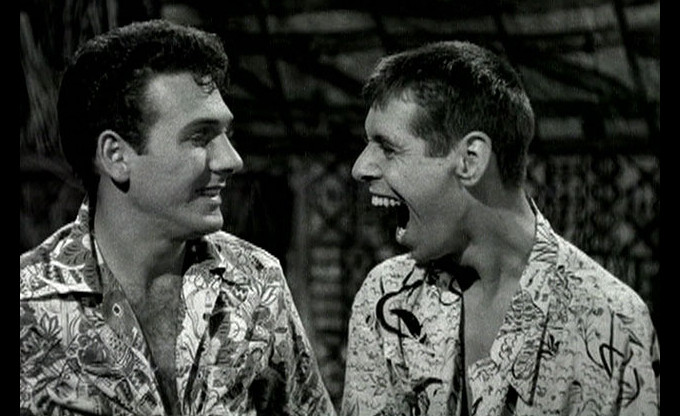
In fact, the original working script for the picture was “White Woman of the Jungle”, another suggestion was “The Boys from Brooklyn”. However, according to legend, it was co-producer Jack Broder’s 10-year-old son who suggested sticking a “Gorilla” in the title, and his assistant and co-producer Herman Cohen thought it foolish not to exploit Lugosi’s fame in the marketing.
Bela Lugosi Meets a Brooklyn Gorilla has a rather interesting story. It all started with a 16-year-old boy, Sammy Petrillo, who went to have his hair cut in 1950 and was told by his barber that he looked like Jerry Lewis. Petrillo, a budding comedian, took the comment to heart and started imitating the mannerisms and jokes of the famous actor and funnyman. At one point Lewis even hired the young imitator for a skit on NBC’s The Colgate Comedy Hour, where he played a baby Jerry Lewis in a crib. Petrillo soon teamed up with crooner Duke Mitchell, who vaguely might resemble Dean Martin in the right light, and the two started performing at night clubs as Martin & Lewis imitators.
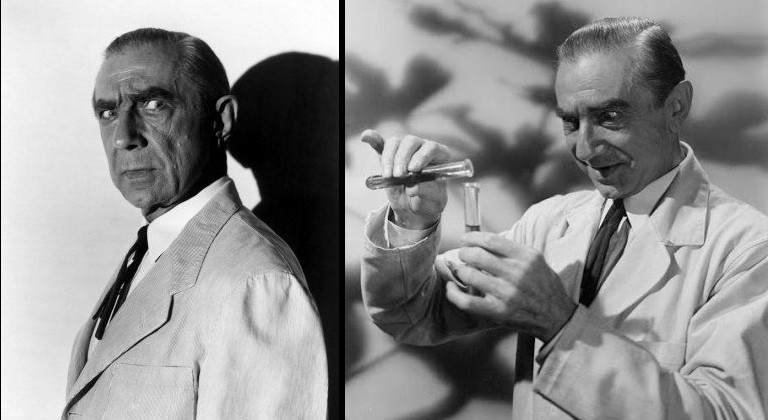
Maurice Duke, who managed the duo, had been pitching the idea of a film to studios, and managed to convince Jack Broder and Herman Cohen at Realart Pictures to produce a series of movies starring Duke and Petrillo, starting with what was initially called “White Woman of the Jungle”. Bela Lugosi got involved because Realart Pictures had acquired the screening the rights to a number of old Universal horror films and was in the process of re-releasing them. When Paramount producer Hal B. Wallis and Jerry Lewis caught wind that Realart was making a picture with a Duke and Petrillo they saw red. Lewis knew John Broder, and producer Herman Cohen, who was Broder’s assistant, recalls in Tom Weaver’s book A Sci-Fi Swarm and Horror Hoard that Lewis burst into Broder’s office one day and the two engaged in a screaming contest. Cohen also says that when filming was over, Wallis tried to buy the negative and all copies so he could burn them. Broder, ever the businessman, figured that if Paramount paid better for not showing the film than he would earn for showing it, it was a win-win situation. However, Wallis wasn’t prepared to cough up the sum that Broder had in mind, so the deal never came to pass.
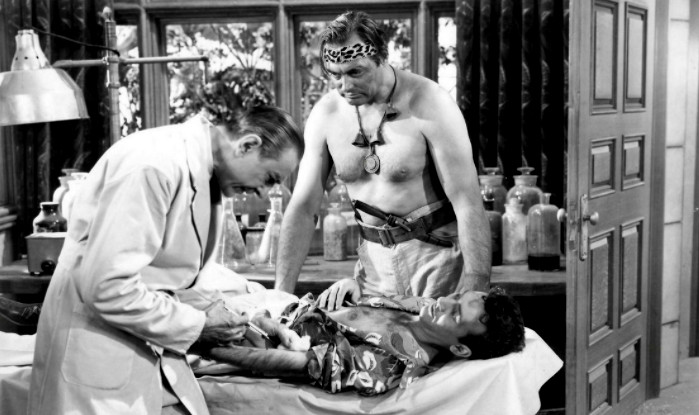
Herman Cohen, at the time a young newcomer to Hollywood almost straight out of the army, was de facto producer of Bela Lugosi Meets a Brooklyn Gorilla. However, he thought the film was rubbish and gave Maurice Duke producer credits, even though Duke didn’t actually do anything else than deliver Mitchell and Petrillo (at least according to Cohen). Alex Gordon, at the time a young up-and-comer in the low-budget movies business, was on set for four days as Bela Lugosi’s valet/minder. Although written out of Tim Burton’s famous movie, Alex Gordon was in fact perhaps Lugosi’s closest friend during his final years, and along with Ed Wood tried to take care of and promote the fades and sickly star, young fanboys as they both were. Gordon is also interviewed by Tom Weaver, and his and Cohen’s recollections of the filming differ somewhat. According to Cohen, Lugosi was sick and tired, and sometimes difficult to get on set after hed had taken a break in the break room. Cohen also states that Lugosi had difficulties with some of his lines, “but, hey, we only made the film in seven days, so he couldn’t give us that much trouble!” Like everyone else who’s worked with Lugosi, Cohen describes him as incredibly nice and funny. He does remember that Lugosi dashed off to the break room between takes, and only later realised that he was probably shooting up morphine. Although a rather well-kept secret at the day, Lugosi was hooked on morphine due to a painful leg injury from his youth.
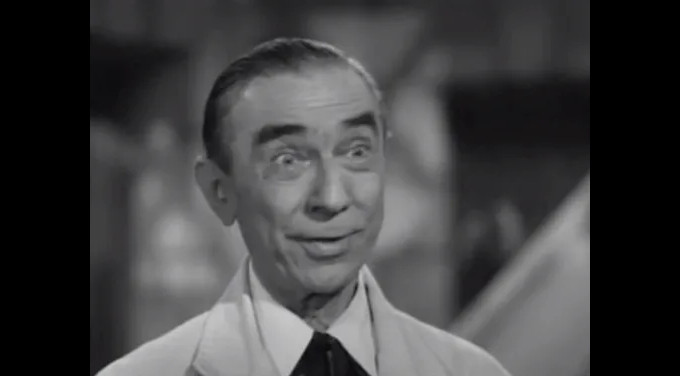
Alex Gordon, on the other hand, recalls that Lugosi was looking “rather well” and was always on set on time and knew all his lines perfectly. According to Gordon, Lugosi did freeze up when Petrillo started ad-libbing. Gordon seems to have hated Petrillo (and Mitchell), perhaps more than anything for tripping up his hero Lugosi. But Gordon says that not only did Petrillo act like Jerry Lewis on screen, he tried to imitate him off-screen as well, by acting like the big boss of the movie. Gordon tells Weaver he’s never met a more obnoxious person in his life, save perhaps for the actual Jerry Lewis (who was famously assholish). Cohen does agre that Petrillo was “crazy”, but thought that he was “very funny” off-screen. Not so much on-screen, though, both Gordon and Cohen agree. Both also had the highest respect for director William “One-Shot” Beaudine, a one-time Hollywood darling during the silent era, who was rejected by the studios when sound pictures came along. Beaudine earned his nickname in the thirties and forties for shooting pictures extremely fast, even though the notion that he usually didn’t do more than one take of each shot is a myth. Both of Weaver’s interviewees marvel at Beaudine’s preparedness, efficiency and know-how. Petrillo did later give Beaudine some back-handed praise, calling him “the most laid-back director” he’d ever worked with: “when he was directing, it was like he wasn’t even there”. According to Cohen, Beaudine hated the movie as well.
Alex Gordon also recalls one funny incident regarding Lugosi. In one scene, Lugosi has dinner with the native tribe, and he kept messing up his lines time and again. According to Gordon, the actors were eating papaya in the scene, and apparently Lugosi had never tried the fruit before: “He ab-so-lu-te-ly loved the papaya! In fact he became such an addict that he deliberately fluffed his lines several times so that they would do another plate and bring fresh plates of papaya! […] so he kept eating ’em and eating ’em and eating ’em, which was very funny.”
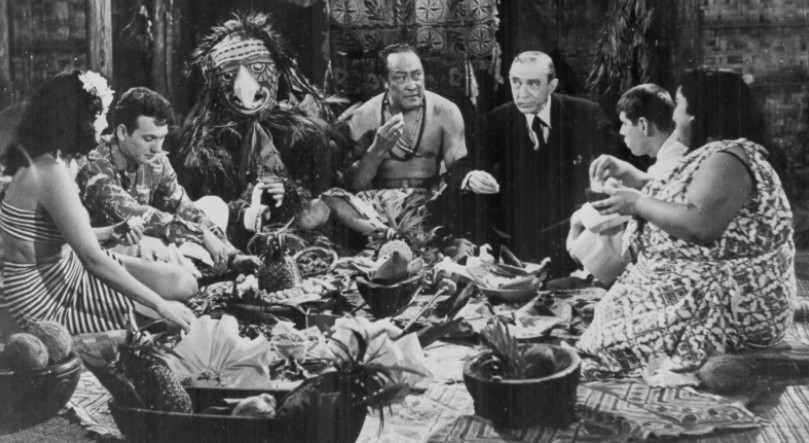
Whatever Alex Gordon thought Mitchell and Petrillo had against Bela Lugosi, it’s not backed up by Petrillo himself, who in a later interview had nothing but great things to say about the legend. In a TV interview with Filmfax, Petrillo says he’s sad about how Lugosi has been depicted during the latter years of his career, as a washed-up junkie. Petrillo remembers him as a “very sweet man, quiet, but when he talked, he had personality. He laughed, he joked, he had a lot of personality.” And I don’t know if I’m imagining it, but Petrillo seems to almost tear up when he talks about Lugosi. You can judge yourself from this clip. He goes on to say: “Lugosi on the set was fun! You know, he was first very dignified, number two, a great actor who we all looked up to, and number three, he was fun. I used to call him Boris and he used to call me Jerry, I would say ‘How are you doing Boris?’ and he would say “Oh hey there, Jerry!”, and we would just converse and have a ball. He was very grandfatherly. I can’t stop saying that because he was very good to me. I was seventeen years old. You have to look back and put things in their context: 17-year old guy, older man, top actor, was he gonna be grandfatherly? That’s what he was”. Petrillo then remembers that he and Mitchell both froze in awe of Lugosi, when he delivered his long speech about evolution in extremely long-winded technical terms straight from memory in one single take. “We couldn’t believe it. We just froze. And the whole crew applauded at the end, it was like a standing ovation. I can’t say that I ever saw him flub a line!”
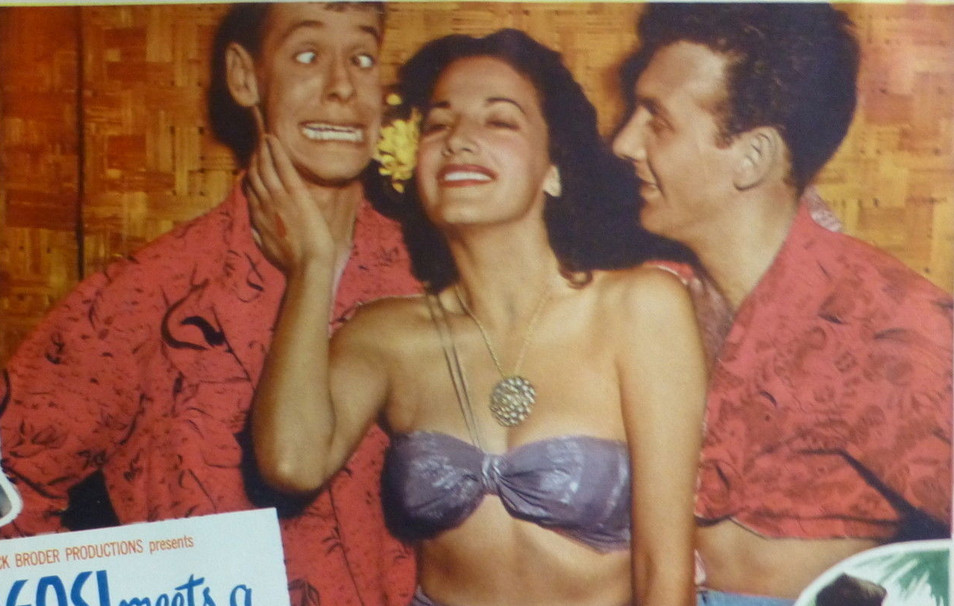
Whatever the circumstances, the film got released, and has since become one of those movies that critics and B movie fans love to hate. Ultimately your opinion on this film will hinge on just how grating you find Sammy Petrillo’s high-pitched Jerry Lewis imitation. There are butt-hurt Lewis fans who maintain that Petrillo is NOTHING like Jerry. But unfortunately this is simply not the case. Film historian Bill Warren writes in his book Keep Watching the Skies that when he as a Lewis fanatic watched the film as a kid, he thought he was watching the real thing. At a talk show, the host once showed Lewis clips from his early films, and included scenes from Bela Lugosi Meets a Brooklyn Gorilla. Not only did Petrillo look like Lewis, he also sounded like Lewis and his mimicry and mannerisms are eerily spot-on. There’s a notable difference, though: Petrillo is not particularly funny. Part of this is naturally the inept script. The film doesn’t play like a movie as it does a variety show. There’s a dusty vaudeville feel to the proceedings and the jokes that resemble — to quite a large degree — that of the 20 years older SF musical comedy Just Imagine! (1930, review). But even that reactionary clunker feels fresher than Bela Lugosi Meets a Brooklyn Gorilla, in which the running gag is Petrillo trying to escape the amorous advances of overweight Muriel Landers. With its back-lot tropical setting, dance routines and Duke Mitchell’s crooning musical numbers (which are actually not that bad), the film more than anything feels like one of those musical revue films so popular in 1928 and 1929. The script was written by Tim Ryan, prolific bit-part player and writer of low-budget comedies in the forties and early fifties. Ryan’s background was, unsurprisingly, in vaudeville, and he formed a team with his wife Irene, who later found fame playing Granny on the sitcom The Beverly Hillbillies (1962-1971). Ryan wrote a number of Bowery Boys movies, which is easily recognisable in Bela Lugosi Meets a Brooklyn Gorilla. As stated, one of the film’s working titles was “The Boys from Brooklyn”.
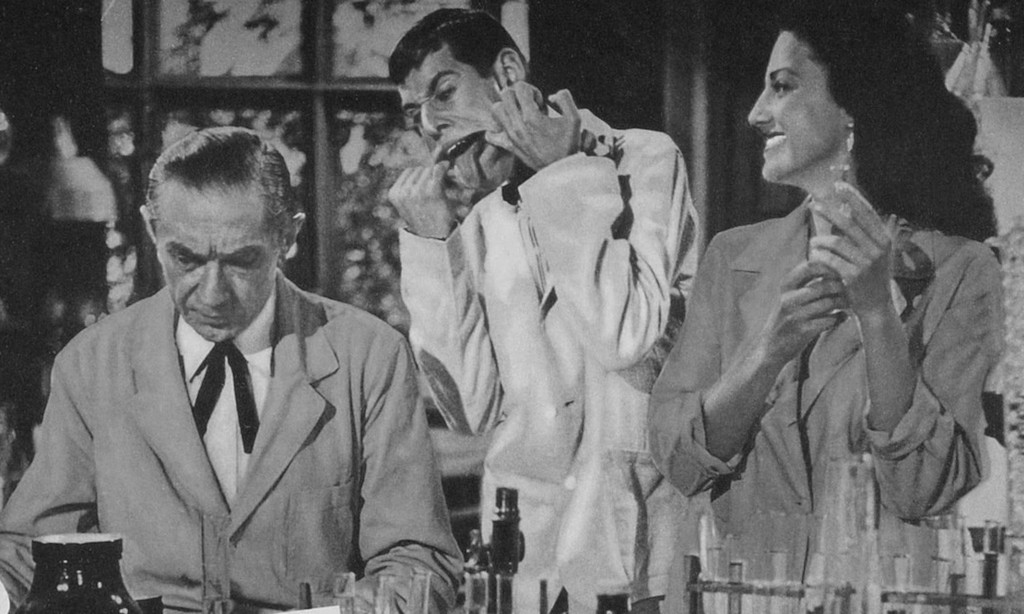
I have not yet written anything about the female lead in the movie, Charlita. In fact, one of the good things about the script is the way her character Nona is written. While she does, obviously, walk around in a bikini, she isn’t your typical superstitious damsel in distress speaking in pidgin English, but as she explains, has a college degree from the states, but returned to her home to get away from the stressful city life. Nona is an independent, modern woman, and a scientist, no less. And while the rest of the natives are portrayed in a very stereotypical manner, they aren’t the tribe that time forgot, but seem to be quite aware of what nightclub singers and airplanes are. Charlita is one of the best actors in the movie, and does her native princess role with dignity and a constant sly smile, as if acknowledging that this is is all rather silly.
Very little can be found online on Charlita, but newspaper archives from the fifties reveals she was apparently something of a celebrity around Hollywood at the time. Between 1949 and 1952 Charlita was a fixture in magazines, often portrayed in cheesecake pictures wearing bikinis and bathing suits. Despite her Portuguese heritage, Latin stage name and olive skin, Clara DeFreitas was born and bred in Massachusetts, and complained that her broad “A”s were difficult to transfer to the Mexican roles she was frequently cast in in low-budget westerns. In the dozen films she made between 1949 and 1952, her roles had titles like Chiquita, Raquelita, Mexican bar girl, Mexican waitress, Princess Papoola, Rosina, fortune teller and Girl in hay. In 1951 she apparently got fed up with her typecasting, telling Virginia MacPherson at the United Press in May 1951 that her conservative Portuguese family back home was upset that she always played the bad girl on the screen: “I’ve been in Hollywood two years now, and I think it’s time I got off the streets”. In December the same year, James Bacon at the Associated Press could reveal that Charlita was now officially done with cheesecake photos and bathing suit roles, as she demonstratively burned her bikini as a media stunt. According to her, her lack of a screen family name also hurt her chances of getting decent roles — she reveals that she usually tells producers that it’s Ginsburg or Kelly, rather than DeFreitas in hopes of getting cast as a non-Latina. She says that Charlita was actually a stage name she took when starting a rumba band back in the day — she later married jazz trumpetist Billy Regis and became a singer in his band. “Bikini art helped me get noticed in Hollywood, but now those bikini pictures are hurting my career.” However, her boycott of bikini and cheesecake apparently didn’t last very long, as she accepted the role as Nona just the next year. And in september 1952 she she told an AP reporter she planned to go topless to the beach, and urged other women to ditch the bikini top as well. She also agreed to accompany the AP photographer down to the beach to take a number of topless pics for the story. “She claims she even wanted to go topless in her current jungle epic, “Bela Lugosi Meets the [sic] Broooklyn Gorilla“, but censors trembled at the thought.”
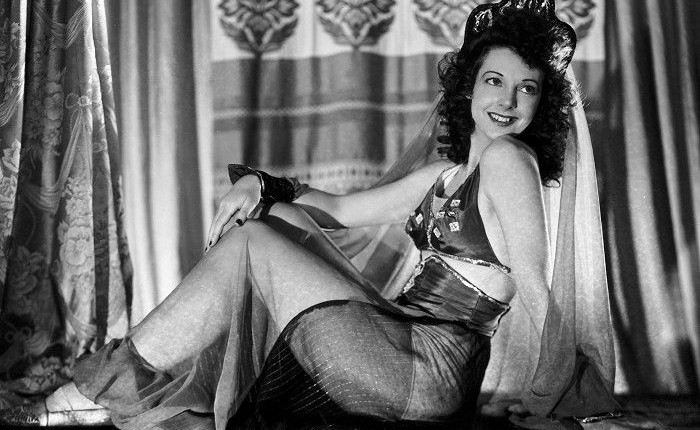
After Bela Lugosi Meets a Brooklyn Gorilla, Charlita segued into TV, but had little more luck in shaking her typecasting. Through the fifties and sixties she was still playing Mexican bar girls and spicy Latinas. She still did the odd movie, like Billy the Ked Versus Dracula (1966), where she was cast as Nana – Indian maiden. News clippings from the latter half of the fifties sees her as the frontwoman of Billy Regis’ band, but after the late sixties she seems to fall off the map, as far as showbiz goes.
Upon the film’s release newspaper headlines declared that Martin & Lewis threatened to sue the filmmakers. In fact, it seems to have been Lewis who did the threatening, while Martin took the whole thing in stride, urging Lewis to “just leave the kids alone”. No bad blood seemed to remain between Martin and “the kids”, as Duke Mitchell later wound up working as a singer at the club that Dean Martin managed. Nobody today seems to know what happened with the lawsuit, so either Broder and Lewis were able to come to some agreement out of the court, or perhaps Lewis came to his senses and dropped the case. Whatever the case, the plans to make a series of Mitchell & Petrillo films never came to pass, and the two split up not long after. Realart quickly sold the broadcast rights to TV, and the films seems to have been on the telly as early as 1954.
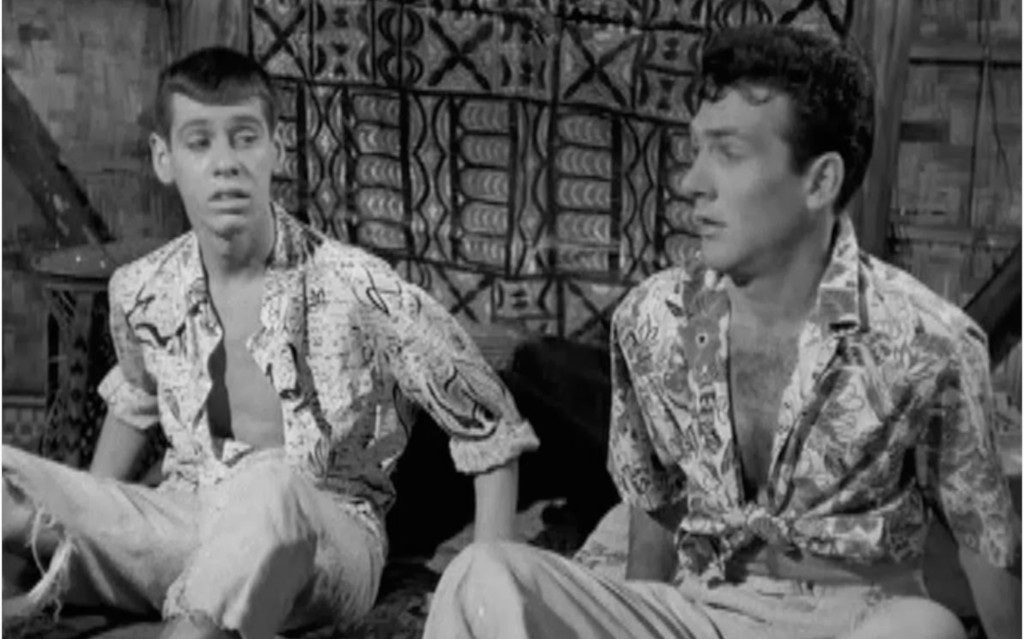
Finding contemporary reviews of this Z-budgeted movie is difficult, the only one I’ve been able to dig up is by Seraphina Alaimo at the New York Daily News, who gives the film 1.5/5 stars. Alaimo writes: “Just in case some faithful fans of [Martin and Lewis] might be tempted to compare the teams, don’t waste your time. […] Come to think of it, Ramona the chimp was the only authentic actor among the crew.” Hazel Flynn at the San Pedro News-Pilot wrote, regarding the news that Jerry Lewis might sue the producers: “Besides Duke and Sammy should ponder this thought. Isn’t ONE team like Martin & Lewis enough … in fact, almost too much?”
TV Guide gives Bela Lugosi Mees a Brooklyn Gorilla 1/5 stars: “Bela Lugosi is at his scary best, but the movie is awful, with Mitchell and Petrillo doing awful imitations of Martin & Lewis“. AllMovie rates it slightly higher, at 1.5/5 stars, with Robert Firsching writing: “Mitchell doesn’t look anything like Dean Martin, but Petrillo does a fairly good Lewis imitation, despite working with an absolutely awful script which has branded this film as one of the worst comedies of all time. After this mess, Lugosi’s subsequent work for Edward D. Wood Jr. seems almost like an improvement, although — to be fair — the actor is not particularly bad here, just surrounded by ineptitude.” In his book Keep Watching the Skies! film historian Bill Warren calls it a “dismayingly bad movie”, and Parish and Pitts in The Great Science Fiction Pictures II write: “Nothing works in Bela Lugosi Meets a Brooklyn Gorilla“. On the other side of the spectrum, John Stanley writes in his book Creature Features that the film is “so awful it’s enjoyable”, and gives it 3/5 stars.
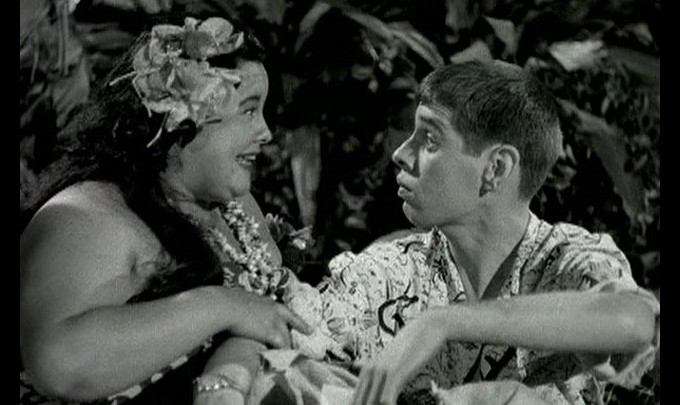
In the blogosphere the judgement is mostly predictable. Gary Loggins at Cracked Rear Viewer: “When it comes to the title of “Worst Film of All Time”, Bela Lugosi Meets a Brooklyn Gorilla has to be considered a top contender. […] Not only are [Mitchell and Petrillo] unfunny, they’re just barely passable as copies of the original duo. Mitchell does have a good crooning voice (more like Elvis than Dino), but Petrillo just flat out stinks! He’s not helped by a lame script written by comedy veteran Tim Ryan. […] Someone should have told Tim that vaudeville was dead. The jokes were old even in 1952, and have grown a lot of mold since.” Derek Winnert in his 1/5 star review: “Director William Beaudine’s ridiculous, weary 1952 horror spoof, with zero production values, demeans the great “(who looks sick and ancient)”. Dan Stumpf at Mystery*File: “Now here is a film that single-mindedly redefines the Bad Movie Genre. Admirers of Bad Films talk glowingly of the ineptitudes of Ed Wood or the excesses of DeMille, but BLMABG is that rarity, a pure, ugly, abomination of a film, a high-concept atrocity that has few equals and no betters (or Worsers) in the ranks of Awful Cinema.”
But there also the other voice. Chris Hewson at the blog Not This Time, Nayland Smith writes: “The amazingly titled Bela Lugosi Meets a Brooklyn Gorilla is known as being an infamously terrible movie, and at first glance it’s easy to see why, but I went into this film with an open mind, and was pleasantly surprised! It’s a thoroughly entertaining b-movie.” And Paul Castiglia at Scared Silly awards the film a full 3/4 stars, heaping praise on Sammy Petrillo in particular: “Though it’s unlikely the filmmakers intended it, the film comes off as a bit of a send-up of the low-budget horrors that Lugosi made for Monogram Studios. After all, mad scientists and simians figured heavily in Lugosi’s “poverty row” potboilers. It also manages to lampoon the whole horror-comedy genre in general – let’s face it, the basic situation that sets up the plot could have easily kicked off an Abbott & Costello monster-fest, let alone a Martin & Lewis pic. If you approach it as a cracked mirror reflection of the great horror-comedies that preceded it, you may find much to interest you in this film. But if you just can’t get past Sammy Petrillo, my three stars are going to dwindle down to one fast for you. Maybe even disappear completely!”
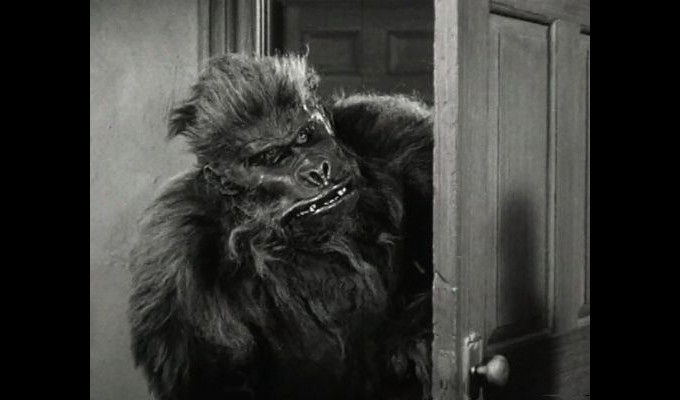
My reaction to Bela Lugosi Meets a Brooklyn Gorilla was very much the same as Chris Hewson’s. In reviewing other Lugosi films I’d kept seeing references to the movie, and how it was frequently panned as atrociously bad. So when I finally got around to watching it, I was somewhat surprised to find a fairly entertaining and professionally filmed horror spoof. From a script point of view this horror comedy is no worse than a dozen or so films that Lugosi made for Monogram and other studios in the thirties and forties. From the point of view of production and direction it’s a lot better than many of them. The only thing that’s really super-bad in this movie is the comedy. And, of course, when it’s supposed to be a comedy, that’s a serious problem. And don’t get me wrong: I probably won’t re-watch this film anytime soon. It is a bad film, but it’s also sort of fun.
For anyone interested in the Poverty Row films of the forties fifties, there are a lot of interesting characters around the sets of this movie. As mentioned, director William Beaudine was once one of the top directors in Hollywood. Beaudine was among the first wave of filmmakers who left New York and headed out to California to get away from the de facto film monopoly of Edison, and arrived in Hollywood in 1914, having then already worked in the industry for five years, mainly as an actor and assistant director. Working with legends like Mack Sennett and D.W. Griffith, he also started directing shorts as early as 1915, and made his first feature film in 1922. His nickname was born out of the fact that he worked extremely cost- and time-efficiently, “editing in the camera”. As opposed to most directors, Beaudine would not ask actors to play out a scene in its entirety for wide shots, and then add in closeups. Instead he planned out beforehand exactly what he wanted wide and what he wanted cropped, and shot only that — hence the name “One Shot” Beaudine. As stated, his nickname was not derived from him being averse to doing several takes of a shot if needed, as illustrated by the story of Bela Lugosi and the papayas.
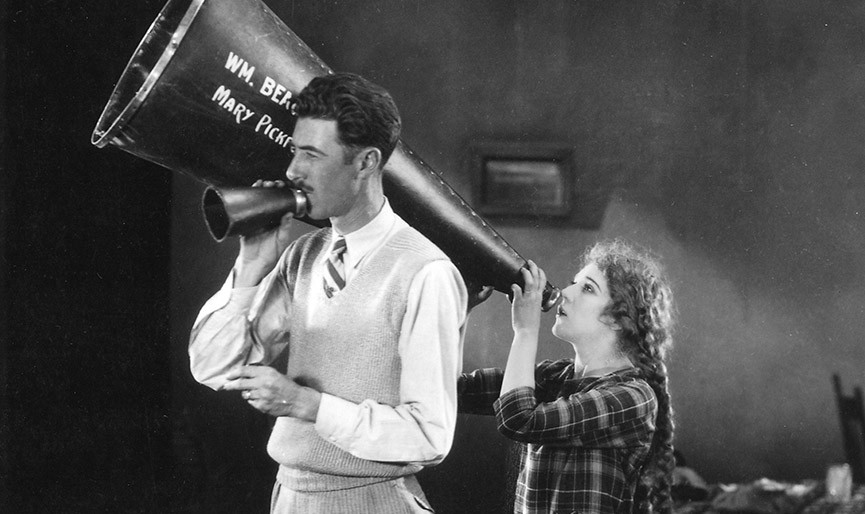
Today much of his work in the silents is lost of forgotten, but he is still remembered for directing a number of films starring one of the biggest films stars in the world, Mary Pickford. With the coming of sound, many respected directors were shunned by the studios, not because they weren’t able to make the transition to sound, but partly because younger and brasher directors made an entrance onto the scene, and partly because the old-timers were seen as somehow outmoded. Beaudine was a comedy specialist, but also made many westerns (as did all directors back then), as well as a fair number of mystery and horror films. In the sound era, he is perhaps best known as a frequent Bela Lugosi collaborator, as well as the director of what must be over four dozen Bowery Boys films and East Side Kids movies. Sometimes these two worlds met, as in Ghosts on the Loose (1943).
In 1943 Beaudine also worked with Lugosi on The Ape Man (review), a film which is in fact atrociously bad, and in 1944 teamed up with a horror legend team of Lugosi, John Carradine and George Zucco for the hilariously bad/zany Voodoo Man (review). In 1966 Beaudine directed the legendary grindhouse features Billy the Kid Versus Dracula and Jesse James Meets Frankenstein’s Daughter, which were to be his last feature films. He graduated into TV in the fifties, and directed, among many other things, a number of episodes of the TV series The Green Hornet, best remembered today for featuring Bruce Lee as the Hornet’s sidekick Kato, as well as most episodes of Lassie (1960-1969).
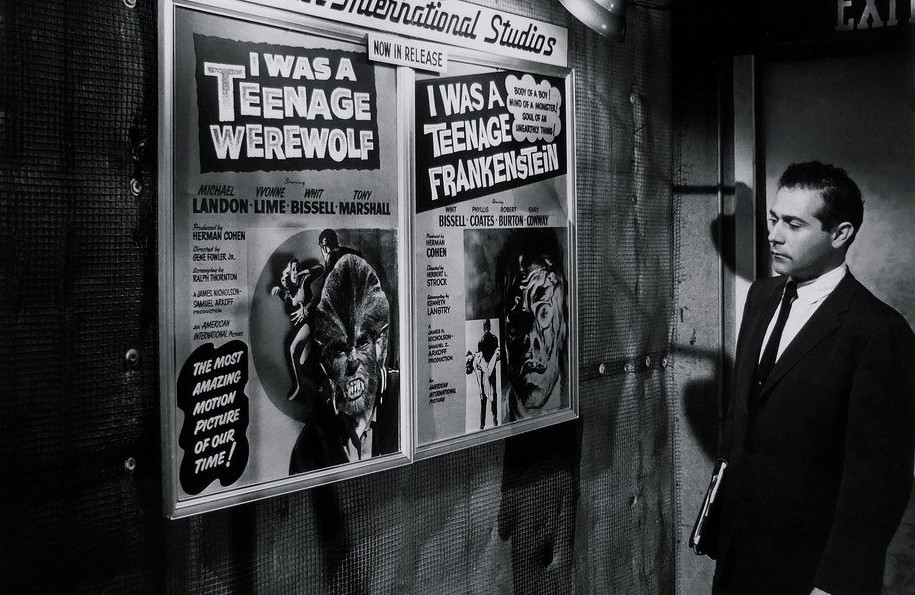
Herman Cohen worked his way up the ladder in the film world, from working as a gofer at a movie theatre in Detroit, to becoming a theatre manager, sales manager for Columbia in Detroit, and working at Columbia’s publicity department in Hollywood. After returning from the military, he looked up fellow Detroiter Jack Broder at Realart, where he became a producer, and in the mid-fifties worked as a producer for Allied Artists/United Artists, another low-budget outfit, for whom he made the post-apocalyptic Target Earth (1954, review). In 1957 Cohen scored big as both writer and producer over at legendary B and Z movie production company American International (AIP), with I Was a Teenage Werewolf (review), which cost 100,00 dollars to make, but raked in 2 millions at the box office. Never one to change a winning formula, AIP ordered half a dozen more teenage monster films by Cohen, including I Was a Teenage Frankenstein (review), Blood of Dracula and How to Make a Monster, all in the late fifties. Cohen is often credited with ushering in the teen/beach/rock n’ roll horror film subgenre of the late fifties and early sixties. In 1959 he relocated to the UK, where he continued to make low-budget schlock, including Konga (1961) and Trog (1970). In the seventies he moved into distribution.
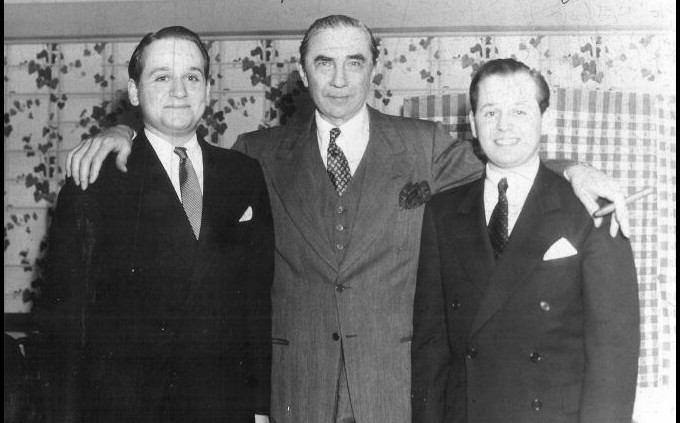
Alex Gordon was at the time a young British screenwriter, still without any Hollywood credits to his name. Gordon tells Weaver he had qualms about working with Broder, because he had just pitched his script for “The Atomic Monster” to Broder, but Broder had turned it down. Instead Broder stole the title and slapped it on the reissue of the Lon Chaney Jr. SF movie Man Made Monster (1941, review). However, when he heard Cohen was to produce, he agreed to become Lugosi’s assistant. Another script he was shopping around Hollywood was called “The Hidden Face”. Both scripts were eventually filmed by Ed Wood as Jail Bait (1954) and Bride of the Monster (1955, review). Wood and Gordon knew each other from their shared friendship with Bela Lugosi, and their first collaboration was a western called The Lawless Rider (1954). When the production ran into problems, Gordon, who acted as producer, hired lawyer Samuel Z. Arkoff. Later the same year Arkoff and Realart’s sales manager James Nicholson founded American International Pictures, and took on Roger Corman and Alex Gordon as their primary producers. Among the dozen films he produced for AIP were the SF pictures Day the World Ended (1955) and Voodoo Woman (1957, review). He later produced The Atomic Submarine (1959) for AA and The Underwater City (1962) for Columbia. His brother was Richard Gordon, producer of such movies as Escapement (1958), Fiend Without a Face (1958), First Man Into Space (1959), The Projected Man (1966), Island of Terror (1966), Horror Hospital (1973) and the infamous Inseminoid (1981). He also wrote and produced another Lugosi film, Mother Riley Meets the Vampire (1952), and produced a couple of less know movies with Boris Karloff.
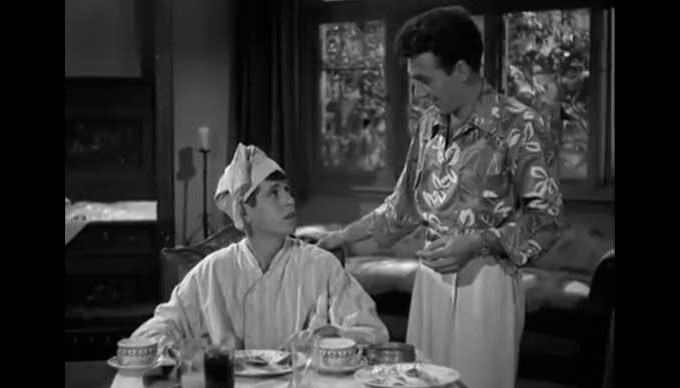
As stated, Duke Mitchell continued his career as a night club crooner in Hollywood and Las Vegas, and also showed up in bit-parts in a few movies in the fifties. However, he is perhaps best known writing, directing, producing and playing the lead in the low-budget cult movie Like Father, Like Son (1974), better known today as Massacre Mafia Style. Allegedly Frank Sinatra was offered a role, but replied: “Duke, I love you, but I get paid real money to be in real movies”. The next year Mitchell made a sequel called Kiss the Ring, about a plot to kidnap the Pope and ask for one dollar in ransom from every Catholic in the world. Unfortunately it remained unfinished until Mitchell’s death in 1981. However, the negative was rediscovered in the 2000’s, and edited and restored by Grindhouse Releasing in 2010 as Gone with the Pope“.
Muriel Landers was a Chicago-born singer and dancer who moved to Hollywood in 1950 to pursue and acting career. The short, heavyset Landers had difficulties getting cast because of her size, but found a niche in comedy, especially on TV, and had guest spots on shows with Red Skelton, Frank Sinatra, and others. In the sixties she turned up in two films with the real Jerry Lewis. Among her serious roles was a moving episode of The Twilight Zone. Al Kikume was a Hawaiian actor who turned up often in B-movies as island natives and different ethnic roles from the thirties to the late fifties. He can be seen in Universal’s The Mad Doctor of Market Street (1942, review) and in Allied Artist’s From Hell It Came (1957, review), that’s the one with the murderous tree stub.
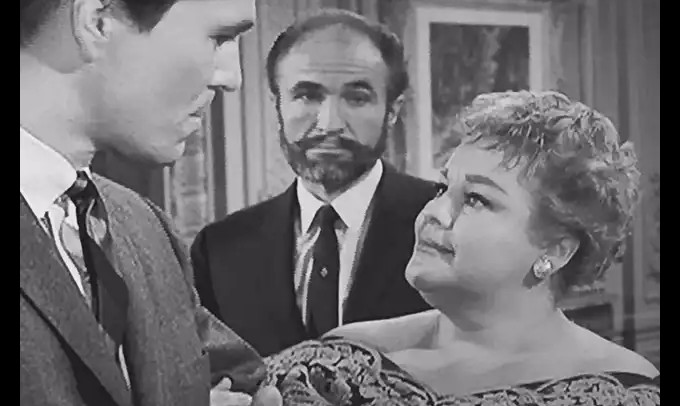
While we can laugh at the bad gorilla suits actors wore back in the day, one must remember that there was nothing like the foam-rubber material used in modern body suits, nor anything like modern prosthetics. And for B movies like this, there was neither time or money to make suits. Maintaining an ape suit also took special skill, as the rubber used in the head piece would dry out, fingers and hair would fall off, there would be rips and tears, etc. Still, giant apes were in high demand both in movies and in stage shows, and a handful of actors and stuntmen soon found that they could make a decent buck on the side by making and maintaining their own suits, and if studios wanted the ape, they had to hire the actor as well. Aficionados of ape movies can instantly tell which actor plays the ape in which movie based not only on the way the simian is played, but based on the suit itself. For most of Bela Lugosi Meets a Brooklyn Gorilla, the ape is played by Steve Calvert, in a suit he purchased from stuntman and serial star Ray “Crash” Corrigan. Calvert was an ape specialist, but also turned up as the alien robot in Target Earth. At one point in the film a second gorilla in a similar suit turns up, and Crash Corrigan has got an IMDb credit for a gorilla role in this movie, so I’d say it’s likely the Corrigan may have showed up for a one-day shoot with his own suit. As his nickname might indicate, Corrigan was primarily a stuntman, but also had a number of featured roles, including the lead in the SF serial Undersea Kingdom (1937, review).
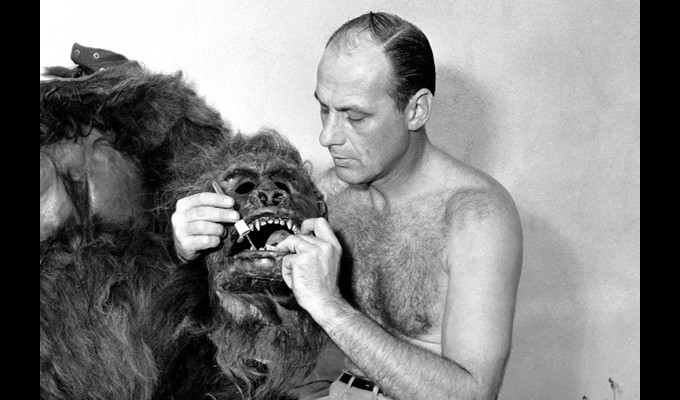
Janne Wass
Bela Lugosi Meets a Brooklyn Gorilla. 1952, USA. Directed by William Beaudine. Written by Tim Ryan. Starring: Bela Lugosi, Sammy Petrillo, Duke Mitchell, Charlita, Muriel Landers, Al Kikume, Mickey Simpson, Milton Newberger, Martin Garralaga, Steve Calvert, Crash Corrigan. Music: Richard Hazard. Cinematography: Charles Van Enger. Art direction: James Sullivan. Makeup: Glen Alden. Sound: Dean Thomas. Wardrobe: Wesley Jeffries & Esther Krebs. Produced by Herman Cohen & Maurice Duke for Jack Broder Productions & Realart Pictures.

Leave a comment